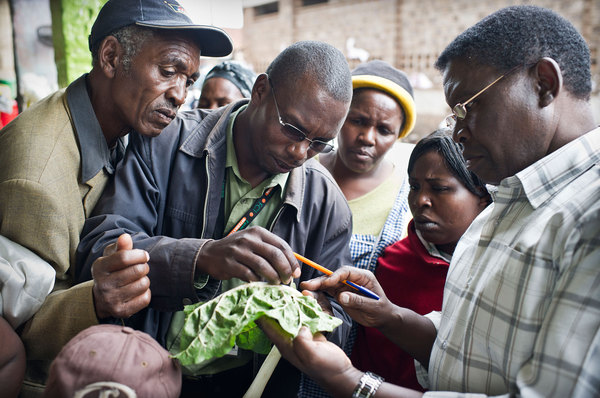Update: New Pest & Disease Records (21 Sep 16)
We’ve selected a few of the latest new geographic, host and species records for plant pests and diseases from CAB Abstracts. Records this fortnight include the first occurrence of stem canker on oilseed rape caused by Leptosphaeria biglobosa in Serbia, three new additions to the grass (Poaceae) flora of Manipur, India and a new record of…
Plantwise partners hone their pathology skills during UK training course
For the fourth successive year, CABI UK Centre staff in June ran a four day training course on Techniques in Plant Pathology. Through lectures, demonstrations and practical sessions, the course provided a comprehensive overview of methods used for diagnosing plant health problems and for isolating, culturing and identifying fungi, bacteria, nematodes, viruses and phytoplasmas as…
South American tomato leaf miner, Tuta absoluta, reported in Nepal for the first time
South American tomato leaf miner, Tuta absoluta (Meyrick), has been reported in a tomato farm for the first time in Nepal and the presence has been confirmed in five districts, Kathmandu, Lalitpur, Bhaktapur, Kavrepalanchowk and Dhading district. Studies carried out by the Nepal Agricultural Research Council (NARC) in May and June this year have identified…
Making the most of the knowledge bank: super searching
In the first post in this series about making the most of the Plantwise knowledge bank , we wrote about how to effectively search for content. I’m now here to tell you that we’d barely scratched the surface of smart searching! In this post we will delve further into effective searching, covering Boolean searches, word…
Myanmar Agricultural Extension adopts the Plantwise framework for its Plant Health System
by Kyin Kyin Win, Deputy National Plantwise Coordinator, Myanmar The Myanmar Plant Health System Strategy (MPHSS) was launched successfully in Nay Pyi Taw on 8th September 2016. It was officiated by H.E. Dr. Tun Win, the Deputy Minister of the Ministry of Agriculture, Livestock and Irrigation (MOALI), and was attended by key officials of MOALI including…
Farmer field schools to link with plant clinics in Nepal
Contributed by Vinod Pandit, CABI Nepal After a successful pilot phase in Nepal, with plant clinics in 45 districts reaching more than 5000 farmers, Plantwise is now looking to scale up and become sustainable by getting partners to commit resources to the programme. To maximise synergies with existing agricultural extension methods, partners have suggested linking…
La Necrosis letal del maíz amenaza la producción en América del Sur
English version below the break. Artículo elaborado por Joao A. Jeque Junior, Léna Durocher-Granger y José Gómez Vargas. La enfermedad conocida como la necrosis letal del maíz (MLN, por sus siglas en inglés), causada por la co-infección de dos virus, está amenazando la producción de maíz en el Ecuador. Según el Ministerio de Agricultura, la incidencia…
Update: New Pest & Disease Records (07 Sep 16)
We’ve selected a few of the latest new geographic, host and species records for plant pests and diseases from CAB Abstracts. Records this fortnight include a new insect pest, Cyrtozemia dispar, on peanut in India, the presence of the entomopathogenic fungus Pandora neoaphidis in Argentina and the first record of Tuta absoluta in Tanzania.
New Zambia office strengthens Plantwise food security programme
CABI has opened a new Southern Africa office in Lusaka, Zambia, putting staff on the ground to strengthen its work in international development. The CABI-led Plantwise programme has been active in Zambia since 2013. Working closely with national agricultural advisory services, CABI and national partners establish and support sustainable networks of plant clinics, run by…
Paying a visit to the Plant Doctor in Uganda
By Katie Tomlinson. Reblogged from the Cabot Institute blog. Two weeks ago I organised a visit to a plant clinic in the Mukono district of central Uganda. The plant clinics are run by district local government extension staff with support from CABI’s Plantwise programme and offer a place where farmers can bring crop samples to…


